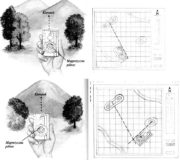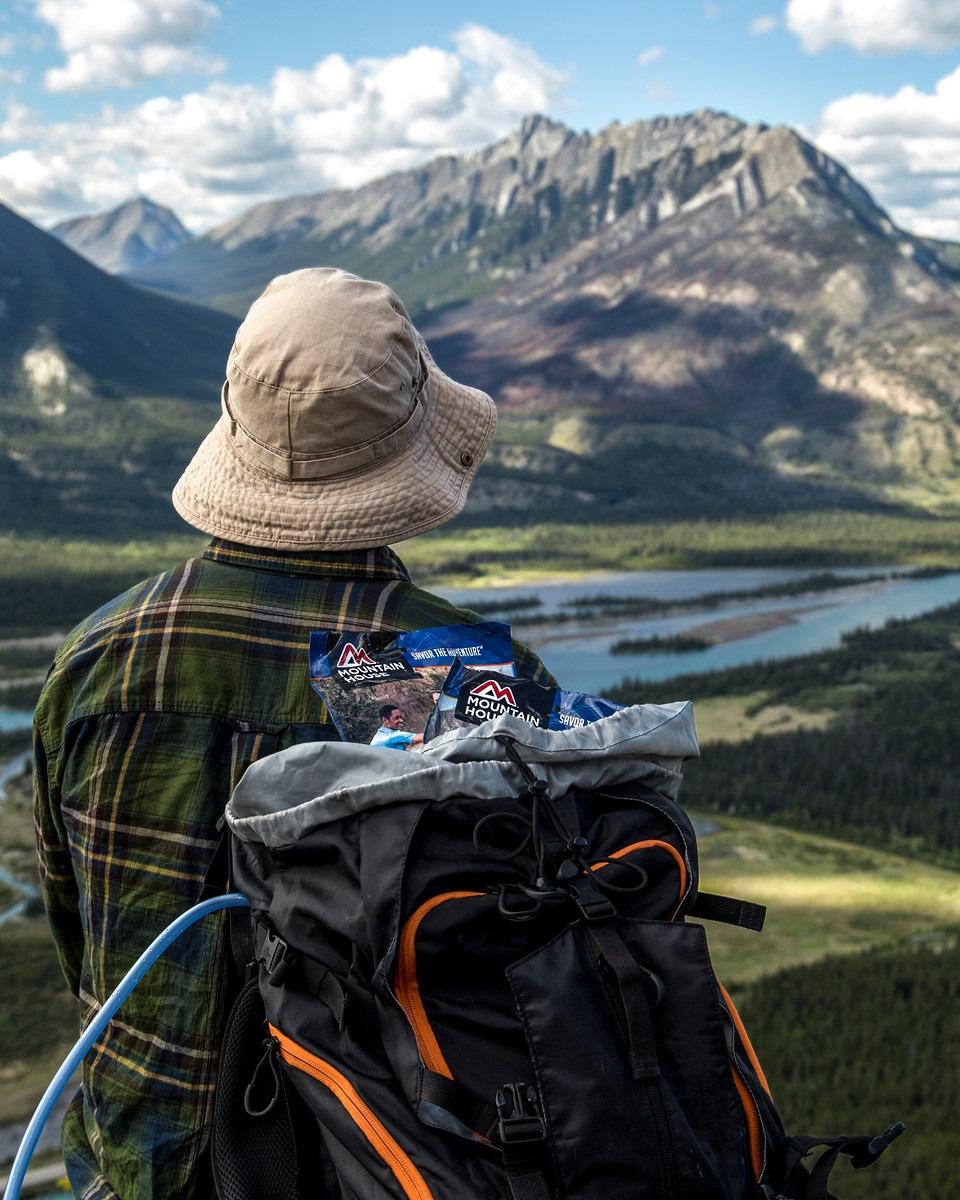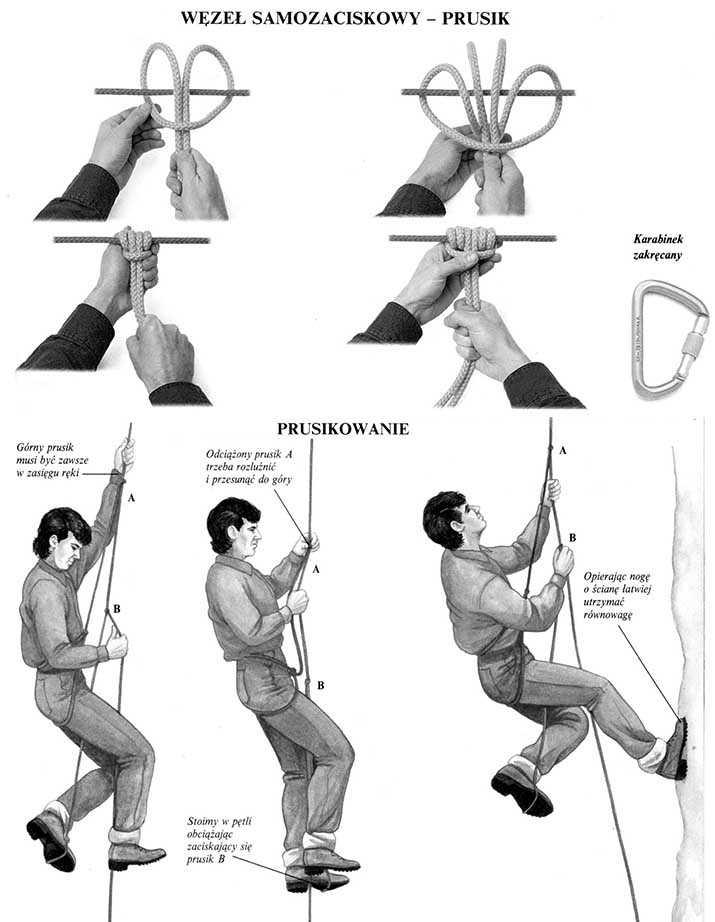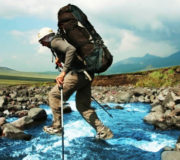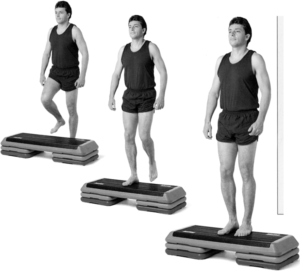Jeśli jesteś nowicjuszem, powinieneś wspinać się wyłącznie z doświadczonym partnerem, który będzie Cię asekurował za pomocą liny z góry. Ale może zdarzyć się sytuacja, gdy nie masz wyboru stojąc przed skalną ścianą. Nim zaczniesz się wspinać, przyjrzyj się dokładnie rzeźbie skał, starając się wybrać najłatwiejszą drogę. Również będąc już w ścianie stale rozglądaj się wyszukując najlepszych chwytów i miejsc, w którym skała jest dobrze urzeźbiona. Jeśli masz wątpliwości czy wybrałeś właściwy wariant, wycofaj się zanim utkniesz w skale.
Wchodzenie
Zaplanuj najlepszy układ ruchów w zasięgu wzroku, i bądź przygotowany na trawersowanie, gdy droga prosto w górę okazuje się nie do przejścia. Wykorzystuj przede wszystkim mięśnie nóg, rąk używaj tylko do utrzymania równowagi.
Chwyty staraj się wybierać niezbyt nisko, aby lepiej utrzymywać równowagi.
Wspinaj się płynnie i zdecydowanie, aby nie stracić równowagi.
Spokojnie przenoś ciężar ciała, nie stój zbyt długo w niewygodnej pozycji, wróć na poprzednie stopnie, jeśli wyżej nie znajdziesz dogodnych chwytów bądź stopni
Schodzenie w stromym terenie jest zwykle bardziej niebezpieczne. Po łagodnym stoku można schodzić przodem, gdy jednak stromizna rośnie, trzeba się odwrócić i rozpocząć wspinaczkę, tyle że w dół. Trudniej wówczas znaleźć chwyty i stopnie, których nie widać pod nogami. Schodząc trzeba się przyjrzeć skale pod nami i zaplanować kilka najbliższych ruchów.
Zawsze szukaj chwytów i stopni powyżej głowy oraz z boku, aby móc je wykorzystać w razie braku odpowiedniego oparcia poniżej.
Schodź spokojnie i ostrożnie na upatrzone stopnie. Może się okazać, że nie są w stanie Cię utrzymać, musisz więc zawsze mieć możliwość, wycofania się do góry.
Po znalezieniu stopnia nie stawaj na czubkach palców, trzymaj piętę nisko.



